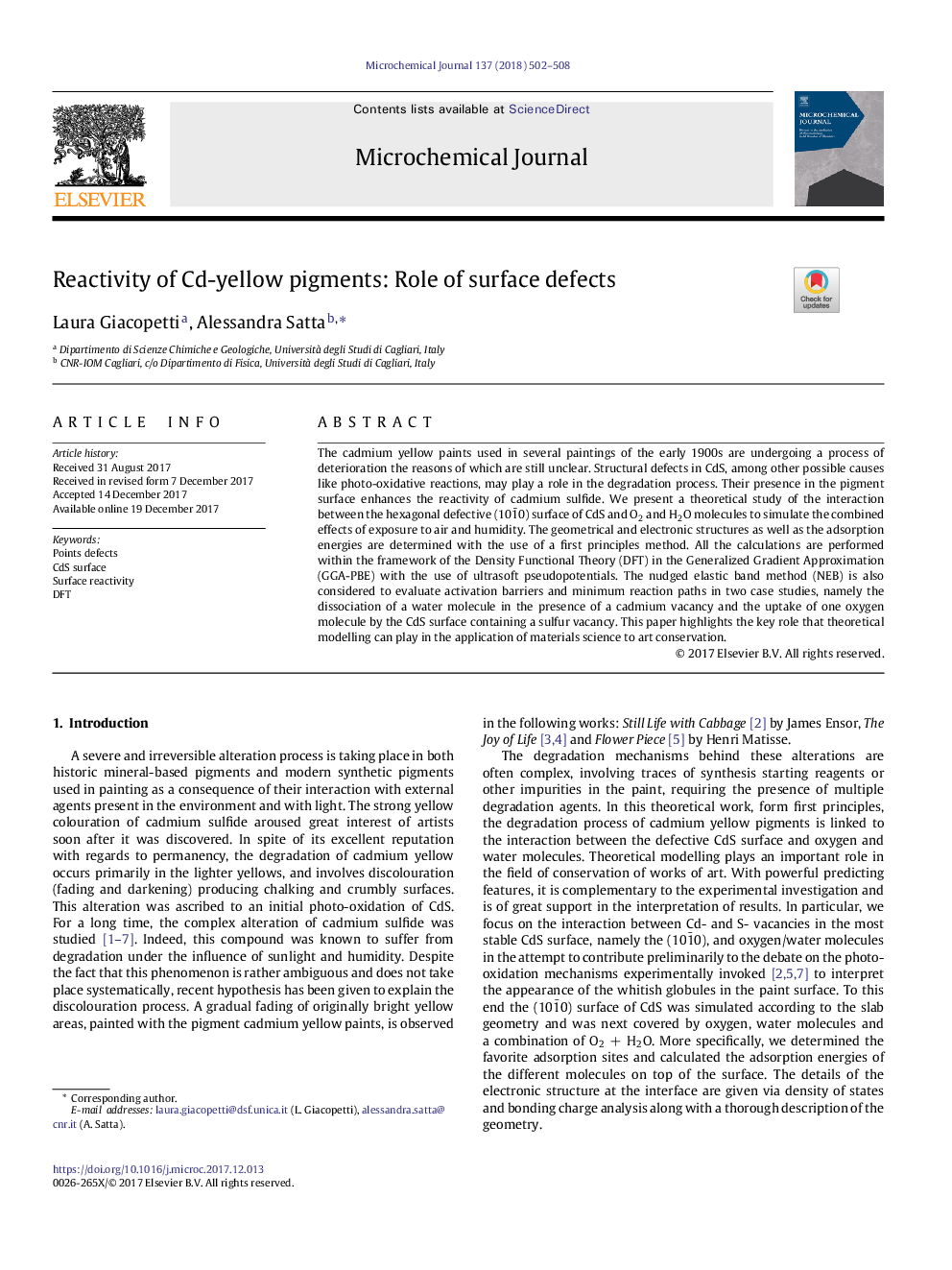| Article ID | Journal | Published Year | Pages | File Type |
|---|---|---|---|---|
| 7641048 | Microchemical Journal | 2018 | 7 Pages |
Abstract
The cadmium yellow paints used in several paintings of the early 1900s are undergoing a process of deterioration the reasons of which are still unclear. Structural defects in CdS, among other possible causes like photo-oxidative reactions, may play a role in the degradation process. Their presence in the pigment surface enhances the reactivity of cadmium sulfide. We present a theoretical study of the interaction between the hexagonal defective (101¯0) surface of CdS and O2 and H2O molecules to simulate the combined effects of exposure to air and humidity. The geometrical and electronic structures as well as the adsorption energies are determined with the use of a first principles method. All the calculations are performed within the framework of the Density Functional Theory (DFT) in the Generalized Gradient Approximation (GGA-PBE) with the use of ultrasoft pseudopotentials. The nudged elastic band method (NEB) is also considered to evaluate activation barriers and minimum reaction paths in two case studies, namely the dissociation of a water molecule in the presence of a cadmium vacancy and the uptake of one oxygen molecule by the CdS surface containing a sulfur vacancy. This paper highlights the key role that theoretical modelling can play in the application of materials science to art conservation.
Keywords
Related Topics
Physical Sciences and Engineering
Chemistry
Analytical Chemistry
Authors
Laura Giacopetti, Alessandra Satta,
